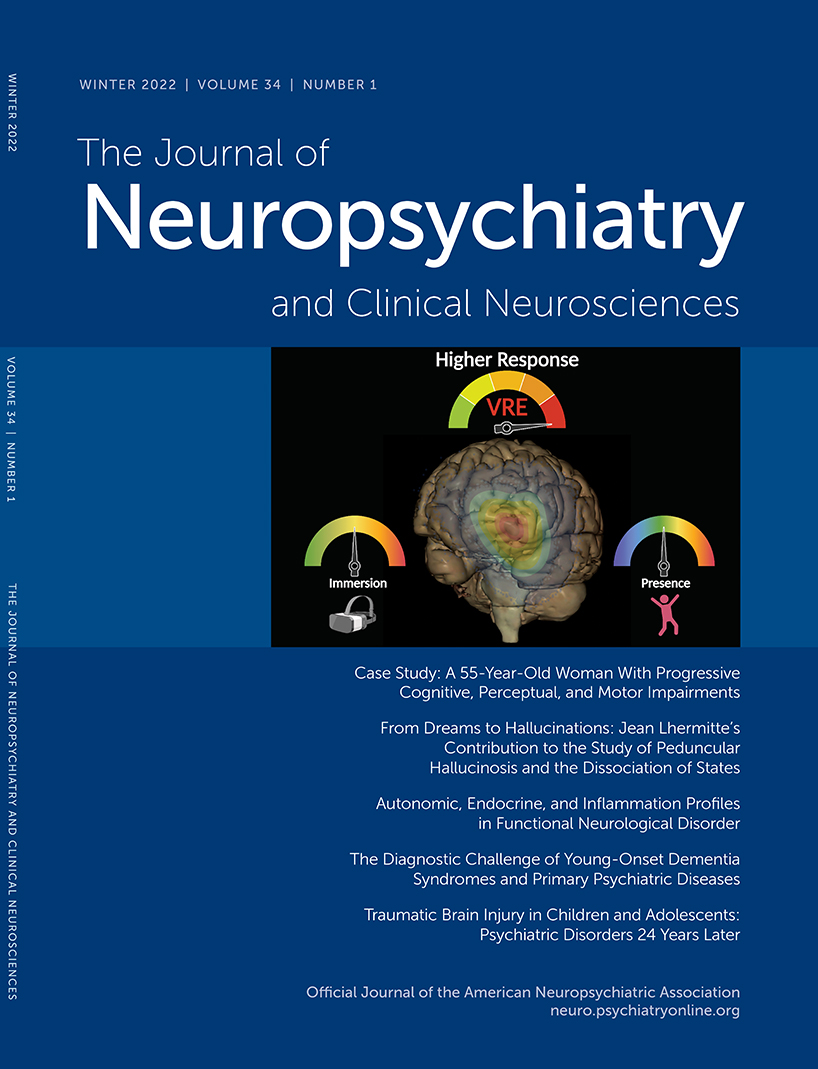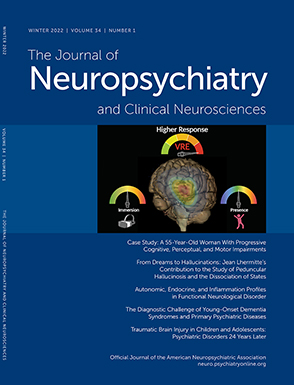Elaborating upon ways to effectively teach approaches to the understanding and care of patients with neuropsychiatric and behavioral neurologic conditions is critical to the success of our field. With this goal in mind, we are pleased to introduce a new section to the Journal of Neuropsychiatry and Clinical Neurosciences (JNCN), “Clinical Case Conferences in Behavioral Neurology & Neuropsychiatry.” Inspired by the pedagogical efficacy and enormous popularity of the “Windows to the Brain” series in our journal, we hope that this new section will be another engaging way to present complex material that is important to clinical practice and training in our field.
The careful review of single cases has been a highly valued component of behavioral neurology, neuropsychiatry, and their parent disciplines throughout our fields’ history. It is through careful study of individual patients that the behavioral consequences of disrupting specific brain areas (e.g., Pierre Broca’s patient Leborgne [“Tan Tan”] [
1], John Harlow’s patient Phineas Gage [
2], and William Scoville and Brenda Milner’s patient HM [
3]) generated hypotheses about the structural and functional neuroanatomy of cognition, emotion, and behavior and systematic methods of their further investigation (
4). Single cases remain useful toward these ends today, particularly when coupled with state-of-the-art neuroscientific knowledge and methods, as tools to elucidate brain-behavior relationships in health and disease and within which to learn from and to apply advances in personalized medicine.
The importance of clinical cases in medical education has been emphasized by many thoughtful individuals (
5,
6) and has been an integral element in
JNCN for more than 30 years (
7). Indeed, the issue marking the adoption of
JNCN as the official journal of the American Neuropsychiatric Association (ANPA) featured an editorial by Barry Fogel, Randolf Schiffer, and Gary Tucker (
8), writing on behalf of ANPA leadership and the Journal’s editorial team, in which they emphasize the essential role of careful case studies to our association, journal, and profession:
Clinicians treating neuropsychiatric patients often must develop innovative strategies for treatment to deal with patients in whom brain dysfunction leads to unusual or refractory clinical conditions. At best, the professional literature will offer the clinician both rigorously studied approaches to typical cases and thoughtfully analyzed case series and reviews that facilitate rational, hypothesis-based treatment of less well-studied conditions. The Journal’s articles and the ANPA’s educational programs will continue to offer both theoretical and empirical perspectives on neuropsychiatric issues. (
8)
Careful review of clinical cases helps to build a bridge between the science and the art of medicine and has the power to engage an audience. It can motivate us to actively think about underlying mechanisms, pathophysiology, and psychosocial factors in an effort to understand the patient’s predicament and to provide optimal care. It can also help us to integrate these factors as we learn more about the dynamic bidirectional interactions of the brain-mind and the environment. Not surprisingly, our beloved colleague, the late Dan Kaufer, M.D., insisted that the multidisciplinary workshops he led for many years at annual meetings of ANPA each begin with an illustrative clinical case as an anchor to the theoretical and empirical neuropsychiatric didactics that followed—maintaining a grand tradition in our field and reifying the commitment of ANPA and, by extension,
JNCN to the use of case studies in neuropsychiatric education (
9).
The new Clinical Case Conferences in Behavioral Neurology & Neuropsychiatry section of JNCN is a natural integration of our journal’s long-standing focus on illustrative and hypothesis-generating cases with the weekly multidisciplinary teaching conference at the Brigham’s Center for Brain/Mind Medicine (CBMM), where its coeditors (K.R.D., S.M.M., S.A.G.) and our collaborating Consulting Editor (D.A.S.), who proposed and who collectively will manage this new section of JNCN, are based. Patients being evaluated and treated at this center are presented to members of the group, which comprises cognitive neurologists, neuropsychiatrists, geriatric psychiatrists, neuropsychologists, physiatrists, and social workers. This process allows a patient’s difficulties and the work-up pursued to be considered from a variety of perspectives, thus generating a comprehensive differential diagnosis and therapeutic plan. Many of these patients continue to be followed for years, providing a textured account of how a disease process unfolds and affects patients and their loved ones over the course of an illness. Brain autopsies are obtained for some of these patients, offering more definitive information about the underlying disease and its neuroanatomic distribution and granting an opportunity to reappraise different components of the history, address outstanding questions, and reflect on the major lessons that can be learned from the case and applied to the care of other patients. Recognition of the heuristic value of these cases led to the development of formal conferences between the CBMM and members of the Division of Neuropathology that are now a regular component of the Department of Neurology’s grand rounds.
The articles in this new section of
JNCN will differ from more traditional clinical-pathological correlation conferences, such as the ones that have been part of the
New England Journal of Medicine since the 1920s (
10). These have received criticism for their emphasis on showmanship and the generation of a long differential diagnosis, which often focuses on uncommon clinical entities (
11). Discussants in our Clinical Case Conferences in Behavioral Neurology & Neuropsychiatry articles will not be blind to the patient’s history and diagnosis and may even have been part of the team that helped to care for the patients. The main goal of the discussants will be to share their reasoning about a case as it unfolded in real time according to available medical records, underscoring their approach to thinking about a case that can be applied more broadly. This format is consistent with inquiry-based learning and a constructivist approach in which critical information is acquired and discussed in a series of steps (
12,
13).
The inaugural installment in this series (
14) describes a 55-year-old woman with progressive cognitive, perceptual, and motor impairments. This report, like others planned, reflects a collaborative effort between members of the Brigham’s Divisions of Cognitive and Behavioral Neurology, Neuropsychiatry, and Neuropathology. Authors include fellows and senior staff. A particularly important aspect of the current case conference is the discussion of a three-tiered approach to diagnosis that includes identifying the 1) neurodegenerative clinical syndrome (e.g., primary amnesic, mixed amnesic/dysexecutive, and primary progressive aphasia), 2) level of severity (i.e., mild cognitive impairment and mild, moderate, or severe dementia), and 3) predicted underlying neuropathology (e.g., Alzheimer’s disease, Lewy body disease, and frontotemporal lobar degeneration). Following this approach can bring greater clarity and precision to understanding challenging clinical cases. We hope that all of us will have an opportunity to learn from this new section in
JNCN and to apply that learning to the care and study of persons and families affected by conditions similar to those described in these reports.

